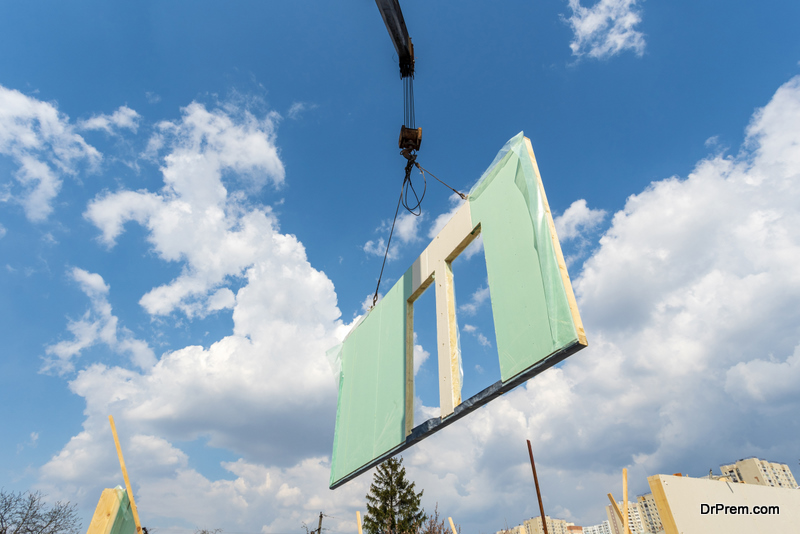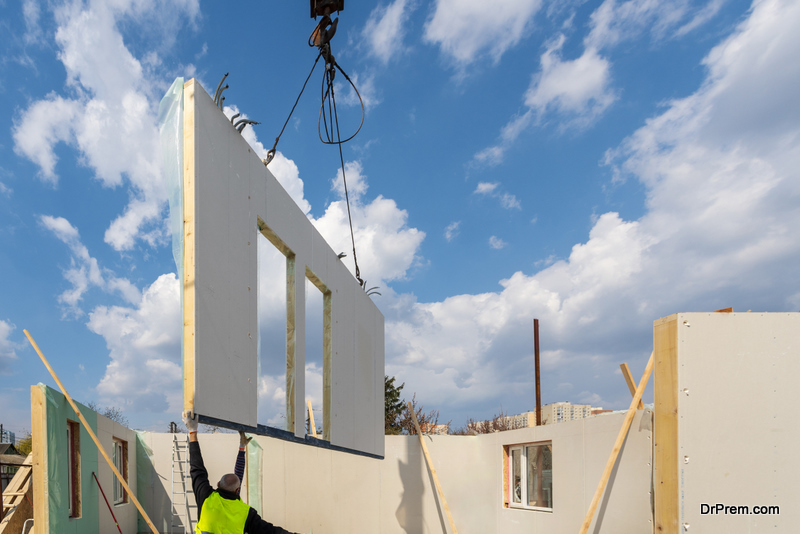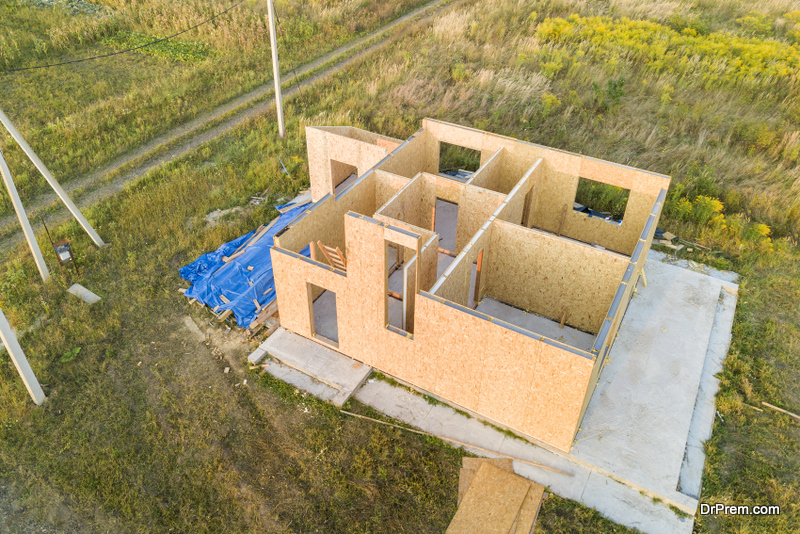is not a new one, as there are records of Romans constructing structures and hauling them to new areas they invaded to build their buildings. It was quite popular in the US before the Depression, and the concept simply stayed in the background for many decades. But now, concerns due to environmental pollution and cost effectiveness of prefab homes have made them popular again. In addition to that, there are also latest innovations like wood-effect tiles that also make them look really good. Let’s take a look at the evolution of prefabricated housing and understand how it has advanced over time:
History and evolution of prefabricated housing
 Prefab homes or prefabricated homes could be the homes of the future. They are gaining in popularity among people who want to avoid the cumbersome process of construction on site. Prefab homes, built off the site, brought to it and assembled on the site. Here’s a brief history of prefab homes:
Prefab homes or prefabricated homes could be the homes of the future. They are gaining in popularity among people who want to avoid the cumbersome process of construction on site. Prefab homes, built off the site, brought to it and assembled on the site. Here’s a brief history of prefab homes:
1624
The year when the first prefab was shipped to Massachusetts from England. It was a panelized wooden home and was meant to be a home for fishing fleet.
1849
The evolution of prefabricated housing continued with ‘Kit’ houses being shipped via trains to the settlements during California Gold Rush.
1908
The best period for prefab houses, with Sears starting a mail order program. The company sold a whopping 70,000 prefabricated homes.
1929
Amilestone in the brief history of prefabricated homes is the Dymacion House designed by Buckminster Fuller. Its metal dome was unique and in 2001, it was honored by Michigan museum as a contemporary design masterpiece.
1936
 Another landmark house, the Estonian House was designed by Frank Lloyd Wright using a grid system which allowed for repetition of dimension and detail. It meant for easier construction of prefab houses using this style/system of design.
Another landmark house, the Estonian House was designed by Frank Lloyd Wright using a grid system which allowed for repetition of dimension and detail. It meant for easier construction of prefab houses using this style/system of design.
1937
1,000 prefab houses were built for sharecroppers in the Missouri area. The houses were not completely prefab but were semi-prefab.
1940
10,000 more prefab homes were built by the Farm Security Association.
1946
World War II stimulates the prefab market, and the evolution of prefabricated housing goes a step forward with 280 new builders joining the movement. This was propelled by President Truman’s Veteran’s Emergency Housing Program.
1953
The Wichita House was presented with great fanfare. 30,000 people show interest in getting prefab homes made, but only two were built.
1950s – 60s
The Tech built House was built by Carl Koch, which had a wooden frame base and a panelized system, a style of prefabricated housing which became quite popular.
In Britain, around the same time, prefab housing picked up. They were designed mainly for families and every home had an entry hall, two bedrooms, a toilet, living room, and equipped kitchen. The aluminum prefab was manufactured in four sections and could be sent by lorry to any part of the country.
1960
 Mobile homes accounted for 15% of US housing, but in the rush to build, the homes suffered from the lack of design. The stigma of prefab designs being badly designed remains even now.
Mobile homes accounted for 15% of US housing, but in the rush to build, the homes suffered from the lack of design. The stigma of prefab designs being badly designed remains even now.
1967
Habitat 67, a housing complex built out of 158 concrete modules.
1974
ZviHecker, the Israeli architect builds the Ramot Housing Complex, a stunning beehive like structure. It had 720 polyhedric modules, which made people sit up and notice the concept of modular homes.
1996– Present
BoKlokHouses start to be built by Swedish construction giant Skanska in collaboration with IKEA. BoKlok houses are sustainable houses and affordable too. Currently, these prefab homes are available in Finland, Sweden, Denmark, UK and Norway.
2000s
A worldwide interest in prefabs is revived and some beautifully designed prefabs get acclaim. Among these were ‘Glidehouse’ and ‘Breezehouse’– Michelle Kauffman, Desert House by Marmol Radziner and Rocio Romero’s LV.
2003
Dwell magazine launched thePrefab Homes’ competition, which was won by the Resolution: 4 Architecture of North Carolina.
2018
McDonald’s uses prefab structures to build their buildings, and the company set a record for constructing as well as opening a building for business in 13 hours. The ground was prepared in advance, though.
In UK, many major supermarket chains have developed modular prefab units to shop buildings, based on the system developed by Aldi, the German retailer and Danish chain Netto.
Another major achievement has been by the Chinese developers Broad Sustainable Buildings, Changsha, who have been breaking records for building skyscrapers in amazingly short durations. The company has gained attention globally, due to its use of prefabricated modules.
By this method, the company builds entire floors in one day. The costs are also reduced even though the buildings have magnitude 9 earthquake resistance, low-cost construction, high insulation efficiency, eco friendly and the indoor air of the buildings is estimated to be 9 times cleaner than outdoor air.
Final Words
Due to the evolution of prefabricated housing, it is possible for many people to have their own homes without breaking the bank. Prefab housing is also attractive due to their sustainability factor and ability to be customized.
Article Submitted By Community Writer




